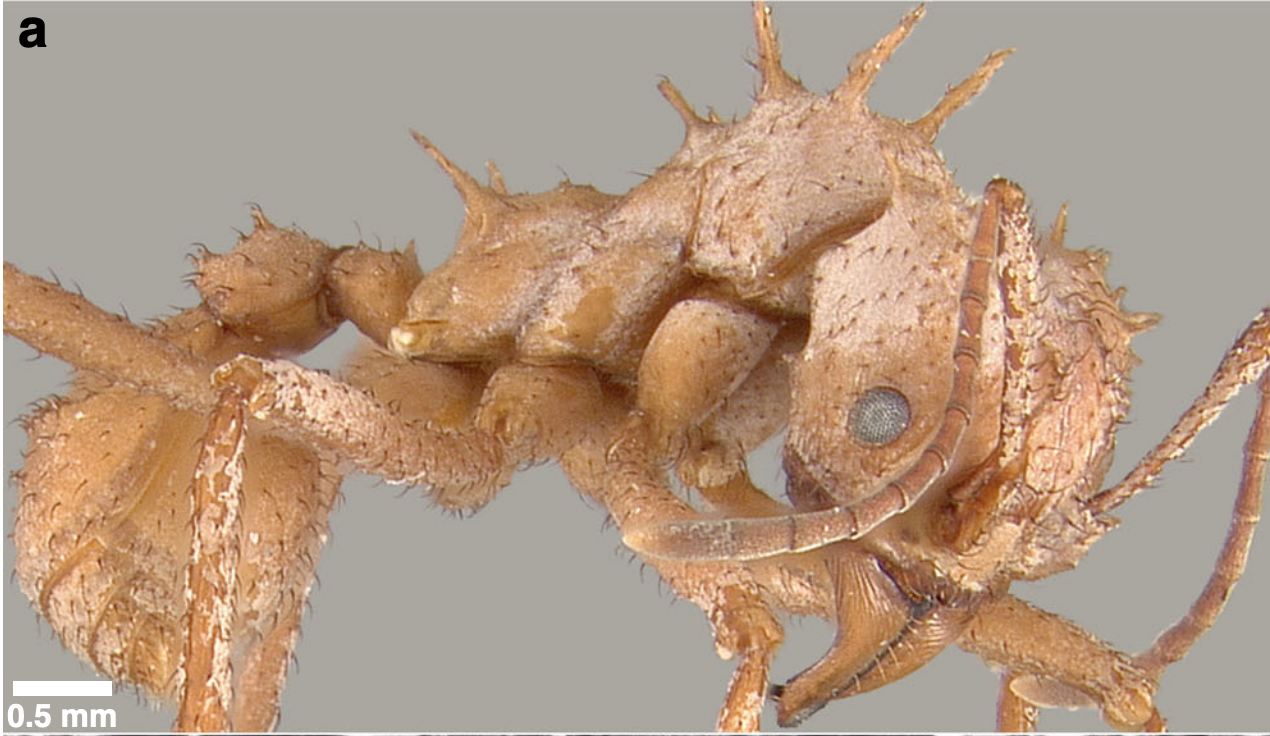PARIS (AFP) — A well-known leaf-cutting ant grows its own body armor using biominerals, a protective power previously unknown in the insect world, scientists have discovered in research published Tuesday showing this makes the ants almost unbeatable in battle.
Biomineral armor is seen in the natural world in crustaceans like lobsters as well as in other marine animals — sea urchin spines contain calcium carbonate for example — but it has not previously been found in insects.
Researchers stumbled across the discovery while investigating the relationship between the fungus-growing ant species Acromyrmex echinatior and antibiotic-producing bacteria that helps them protect their crops.
They noticed that the larger worker ants, known as majors, have a "whitish, granular coating" over the surface of their bodies, according to co-author Cameron Currie, professor of Bacteriology at the University of Wisconsin-Madison.
He said Hongjie Li, the lead author of the report published in Nature Communications, "became fascinated with the crystals" and discovered it was a biomineral layer that develops as the ants mature, increasing the hardness of their exoskeleton and covering nearly the entire body.
While researchers do not know for certain why the ants have this unusual armor, Currie told AFP they suspect it has a lot to do with the soldier ants of another species of fungus-growing ants, Atta cephalotes.
The two species will often engage in territorial "ant wars," which the researchers simulated in lab-based battles.
"When the Acro majors are without their armor the Atta soldiers quickly cut them into pieces, literally," Currie said.
"When they have their armor, they actually go from almost always losing the battles to almost always winning."
The authors found that the benefits of a biomineralized exoskeleton go beyond giving the workers an edge in ant wars.
Their studies suggest it also helps protect them against infection from the disease-causing fungus Metarhizium anisopliae, which might otherwise spread quickly through their dense colonies.
Rare as sea urchin teeth
Ants are believed to have started fungus subsistence farming about 60 million years ago in South America.
Some 20 million years ago the practice became more "industrialized," with the emergence of leaf-cutting ant species like Acromyrmex echinatior and Atta cephalotes living in large, complex colonies and harvesting fresh vegetation that they use to grow their fungus.
Acromyrmex echinatior colonies can be formed with hundreds of thousands of large and small worker ants.
"The large ones do the cutting and carrying of leaves, as well as engaging in wars and battles with other ants," said Currie.
"The small ones do the gardening."
Atta colonies are bigger, composed of perhaps millions of ants, with up to seven different sizes of workers, including soldiers for "defence and ant wars," Currie said.
The Acromyrmex echinatior armour is made from a high-magnesium calcite, researchers found.
This is a rarer form of biomineralisation where the increased hardness from the magnesium is thought to help them grind up limestone.
Given that the armor has only just been found on a relatively well-studied ant species, the researchers said this type of biomineral protection could be more widespread in the insect world.
But Currie said this was likely to be the calcite biominerals found more commonly in marine animals like lobsters, rather than the high-magnesium calcite of the ants' armor and sea urchin teeth.
"These ants are pretty special in many regards," he added.
by Kelly MACNAMARA
© Agence France-Presse
Subscribe to Closing Arguments
Sign up for new weekly newsletter Closing Arguments to get the latest about ongoing trials, major litigation and hot cases and rulings in courthouses around the U.S. and the world.









